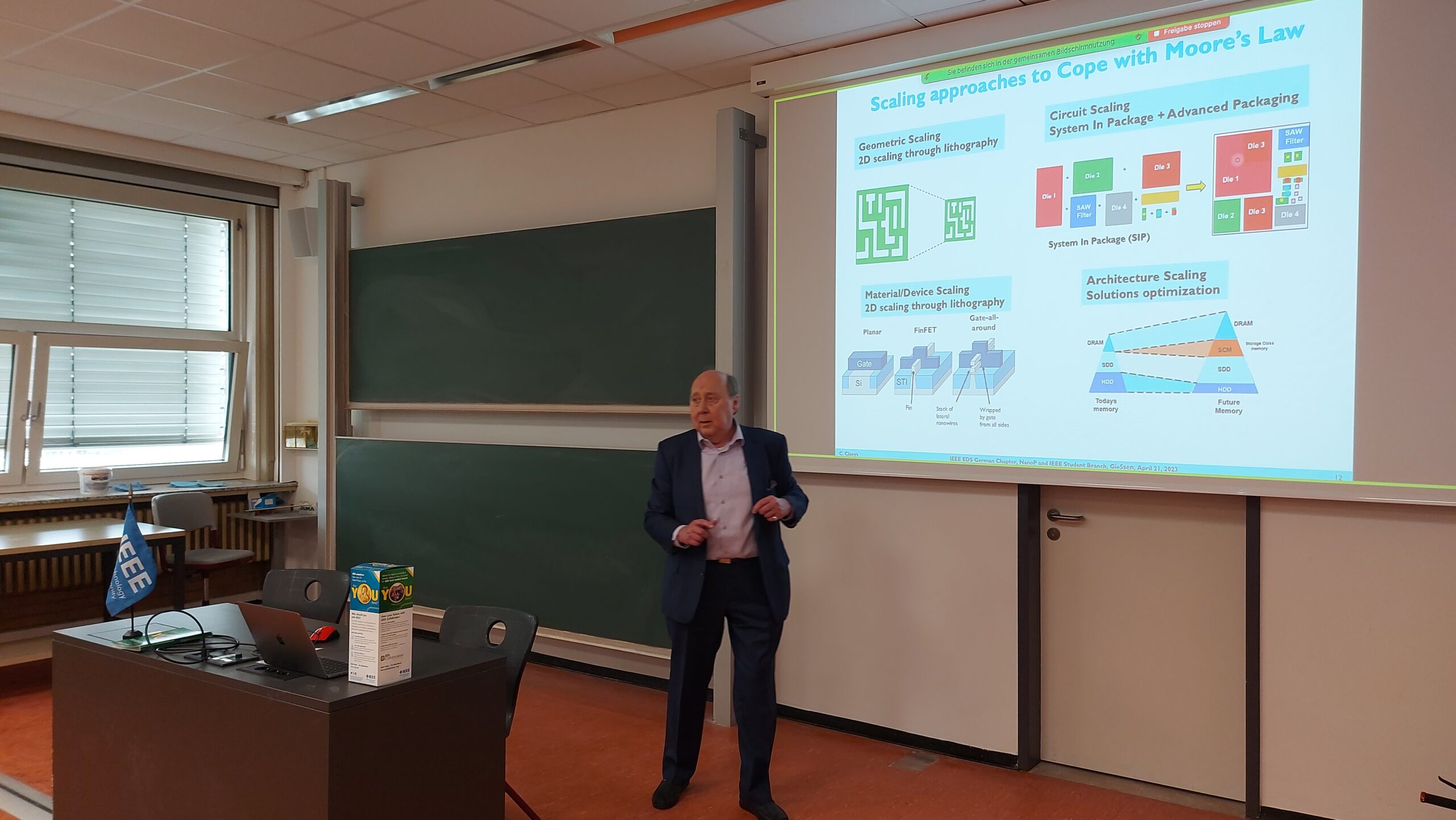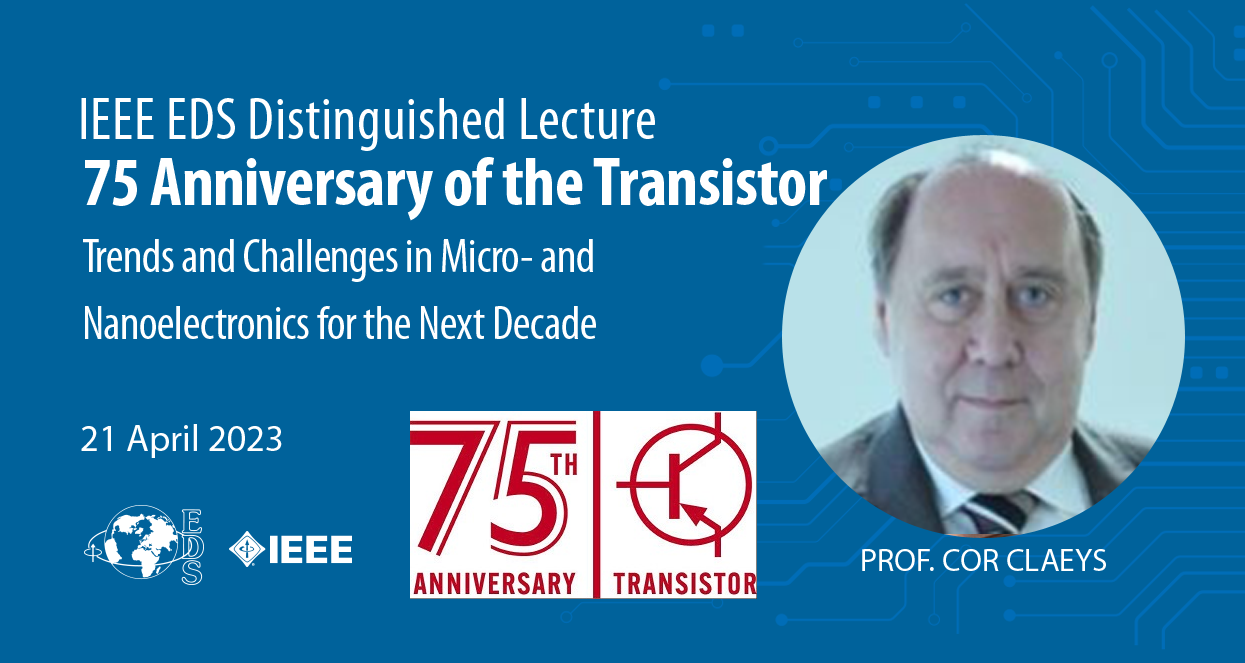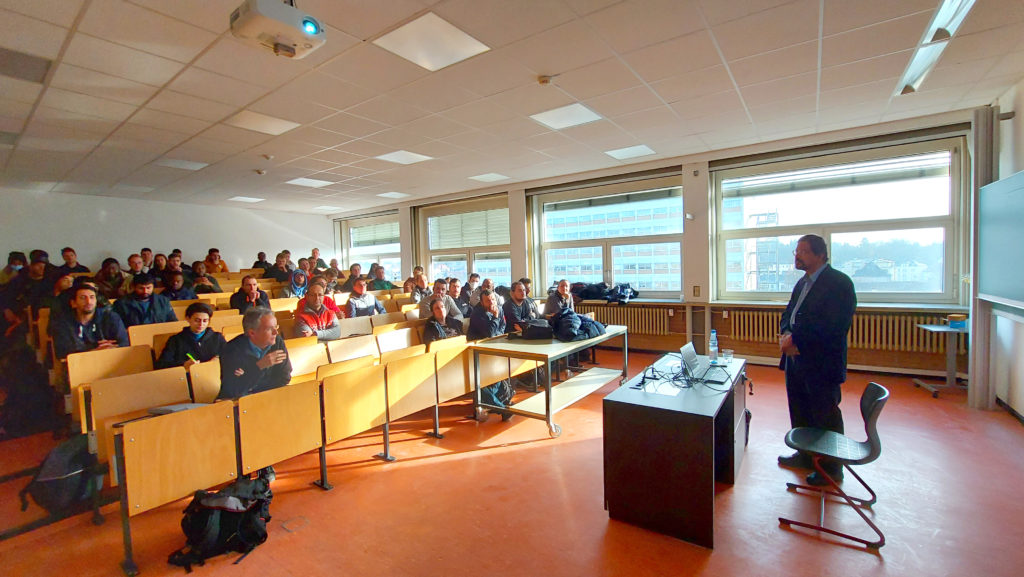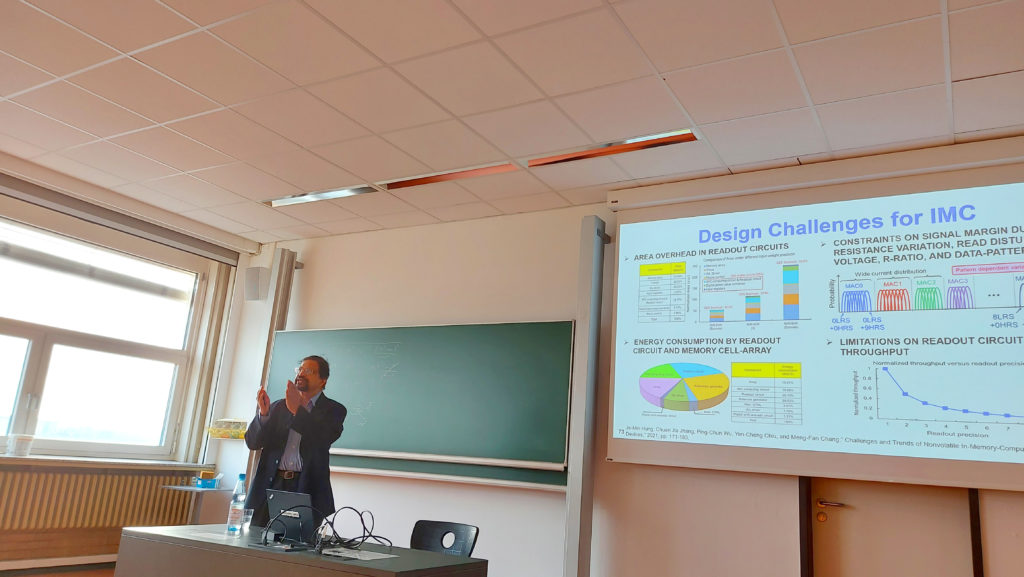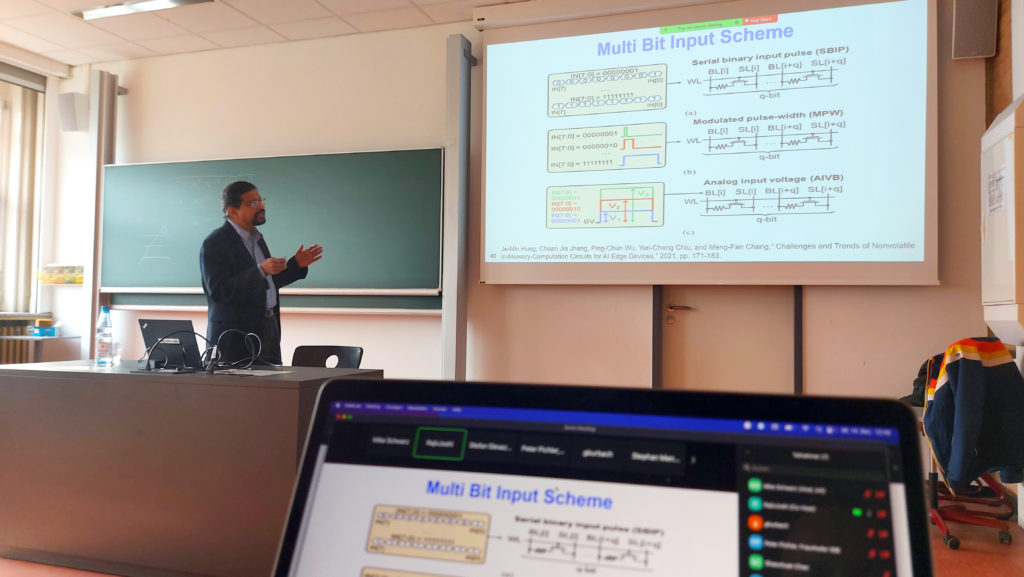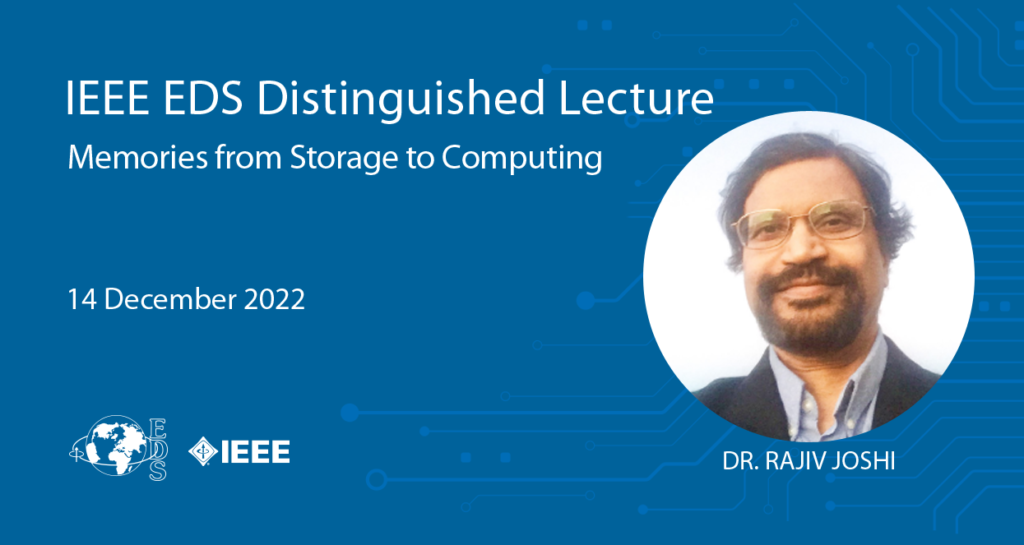Si-based Resonant Interband Tunnel Diodes for Quantum Functional and Multi-level Circuitry (Mixed-Signal, Logic, and Low Power Embedded Memory) to Extend CMOS by Prof. Paul R. Berger
The EDS Germany Chapter and NanoP proudly presents Paul R. Berger from Ohio State University, USA for a Distinguished Lecture on “Si-based Resonant Interband Tunnel Diodes for Quantum Functional and Multi-level Circuitry (Mixed-Signal, Logic, and Low Power Embedded Memory) to Extend CMOS”. The lecture will be held on 22nd June 2023 at 2pm Berlin time. The Distiguished Lecture will be held on site (Werner-Hartmann-Bau, Room 205/206 , Nöthnitzer Str. 66 , 01187 Dresden ). Information provided via IEEE vTools by the following link: https://events.vtools.ieee.org/m/364569
Abstract:
The dawn of tunnel diodes, commonly attributed to Leo Esaki in the late 1950’s, predates much of the innovation and infrastructure investment into CMOS technology. But, the lack of a mass production process and inability to monolithically integrate these devices into complex circuits paved the way for the CMOS juggernaut seen today.
However, the unique negative differential resistance (NDR) systemic to all tunnel diodes provides a pathway to exploit new hybrid-CMOS circuit topologies with compact latches and reduced power consumption that could mitigate some of the bottlenecks perceived for scaled CMOS. A new paradigm of computing is possible, capitalizing upon transistor/tunnel diode integration if a viable Si-based tunnel diode could be developed. This talk will explore these opportunities.
This talk will provide a background on Si-based tunnel diode devices and circuits and summarize the results of Si-based RITD device optimization, their monolithic integration with Si-based transistors and present a range of circuit prototyping. The extension of NDR to ultra-low voltage memory will also be discussed.
Paul R. Berger Biography (S’84 M’91 SM’97 F’11):
Paul R. Berger is a Professor in Electrical & Computer Engineering at Ohio State University and Physics (by Courtesy). He is also a Distinguished Visiting Professor at Tampere University in Finland. He received the B.S.E. in engineering physics, and the M.S.E. and Ph.D. (1990) in electrical engineering, respectively, all from the University of Michigan, Ann Arbor. Currently, Dr. Berger is actively working on quantum tunneling devices, printable semiconductor devices & circuits for IoT, bioelectronics, novel devices, novel semiconductors and applied physics.
Formerly, he worked at Bell Laboratories, Murray Hill, NJ (1990-’92) and taught at the University of Delaware in Electrical and Computer Engineering (1992-2000). In 1999, Prof. Berger took a sabbatical leave while working first at the Max-Planck Institute for Polymer Research, Mainz, Germany and then moved on to Cambridge Display Technology, Ltd., Cambridge, United Kingdom. In 2008, Prof. Berger spent an extended sabbatical leave at IMEC (Interuniversity Microelectronics Center) in Leuven, Belgium. Prof. Berger was also a Finnish Distinguished Professor (FiDiPro) at Tampere University of Technology (2014-2019), and he continued as a Fulbright-Nokia Distinguished Chair in Information and Communications Technologies (2020-2022) with the newly merged Tampere University.
He has authored over ~250 referred publications and presentations with another ~115 plenary, keynote, panelist, invited talks, 5 book sections and been issued 25 patents with a Google Scholar H-index of 37. Some notable recognitions for Dr. Berger were an NSF CAREER Award (1996), a DARPA ULTRA Sustained Excellence Award (1998), a Faculty Diversity Excellence Award (2009), Outstanding Engineering Educator for State of Ohio (2014), and IEEE Region-2’s Outstanding Engineering Educator Award (2023). He has been on the Program and Advisory Committees of numerous conferences, including the IEDM, EDTM, IFETC, DRC, EMC, ISDRS, CSTIC, CPTIC and IFSOE meetings. More recently Berger was General Chair the 2021 International Flexible Electronics Technology Conference (IFETC) meeting and was selected as the Founding Editor-in-Chief for the IEEE Journal on Flexible Electronics.
He currently is the Vice Chair of IEEE Columbus, which won the 2022 Best Chapter award (Medium-sized); Chair of the Columbus IEEE EDS/Photonics Chapter; and an IEEE Faculty Advisor for over 30 years. In addition, he is an elected member-at-large to the IEEE EDS Board of Governors (19’-24’), where he was the seminal Vice President of Strategic Directions (20’-21’) and now Chair of the Ad Hoc EDS Future Directions Committee (22’-23’). Berger is on the Steering Committees of the IEEE Future Directions communities, Brain and Quantum. Berger is also an EDS Representative to the IEEE Diversity and Inclusion Committee (2022); IEEE TAB Ad Hoc Climate Change Committee (2022-2023), and a member of the Women in EDS Committee (2022-2023).
He is an IEEE EDS Fellow (2011) and Distinguished Lecturer (since 2011), as well as a Senior member of the Optical Society of America. He has received >$10.2M in USA funding as lead PI, with an additional >$26.2M as Co-PI in USA and >€15.7M in funding from Finland and the European Union. Altogether, he has received ~$52.7M in research funding.


